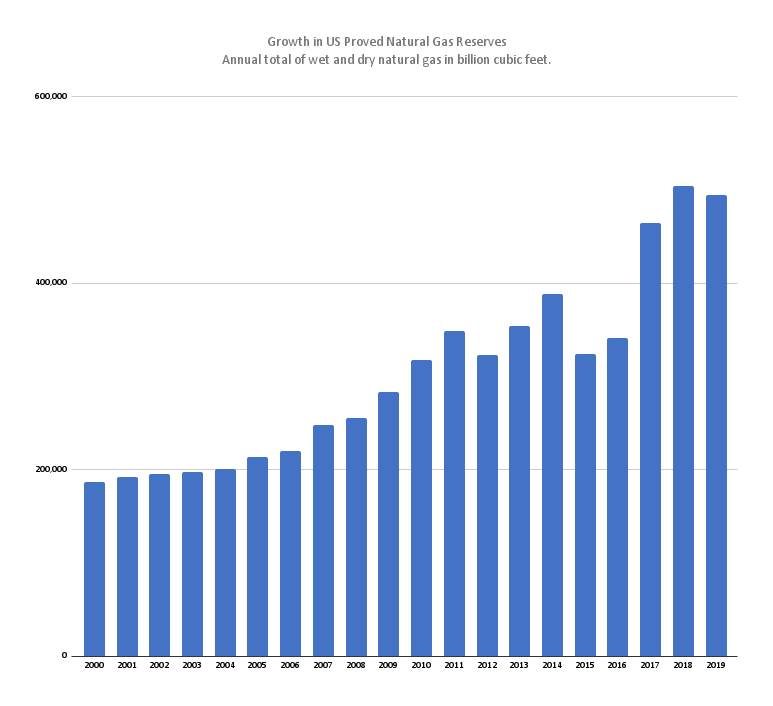The U.S. Energy Information Administration (EIA) estimates that, as of Dec. 31, 2019, U.S. proved reserves of natural gas totaled about 495 trillion cubic feet (Tcf), or more than any other country in the world except for Russia, Iran and Qatar, and more than Saudi Arabia.
Here is a breakdown of what that means:
- First, it refers to two types of natural gas. Most of it is the familiar “dry” gas, or gas that moves through pipelines to power plants to generate electricity or to homes for heating and cooking.
- The rest is “wet” gas, also known as natural gas liquids (read "Natural Gas Liquids are both Versatile and Clean"). Among their common names are ethane, propane and butane.
- The figure below also refers to “proved” reserves. That means that geological and engineering data show that the gas can be extracted from the ground, given the state of technology and if economic conditions warrant. As wells are drilled, the amount of proved reserves can increase.

What the statement does not mean is that the 495 Tcf figure refers to all of the subsurface natural gas in the U.S. That figure is actually closer to 2,900 Tcf as of the start of 2019. The difference between the figures is natural gas that cannot be extracted because of limits to current extraction technology or that it would cost too much to do so.
Put another way…
It’s possible to convert a cubic foot of gas to its equivalent fluid gallon. The ratio is about 1 to 7.5. So if you can envision the size of a gallon milk jug, then imagine 3,702 trillion of those jugs, you’ll have an idea of the volume of natural gas available in the U.S.
Put another way, based on 2019 production, the EIA projects that the U.S. has enough natural gas to last about 80 years.
That’s a lot.
Click here to continue reading the "America's Natural Gas" report.
Recommended Reading
CNX, Appalachia Peers Defer Completions as NatGas Prices Languish
2024-04-25 - Henry Hub blues: CNX Resources and other Appalachia producers are slashing production and deferring well completions as natural gas spot prices hover near record lows.
Chevron’s Tengiz Oil Field Operations Start Up in Kazakhstan
2024-04-25 - The final phase of Chevron’s project will produce about 260,000 bbl/d.
Rhino Taps Halliburton for Namibia Well Work
2024-04-24 - Halliburton’s deepwater integrated multi-well construction contract for a block in the Orange Basin starts later this year.
Halliburton’s Low-key M&A Strategy Remains Unchanged
2024-04-23 - Halliburton CEO Jeff Miller says expected organic growth generates more shareholder value than following consolidation trends, such as chief rival SLB’s plans to buy ChampionX.
Deepwater Roundup 2024: Americas
2024-04-23 - The final part of Hart Energy E&P’s Deepwater Roundup focuses on projects coming online in the Americas from 2023 until the end of the decade.





